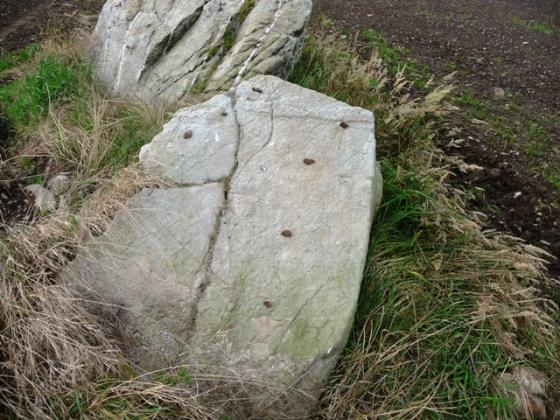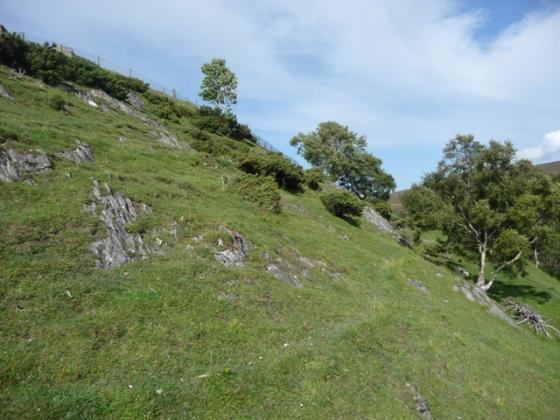
12/01/2013 – The Ringing Stone

12/01/2013 – The Ringing Stone

12/01/2013 – The Ringing Stone




The recumbent (3.6 x 1.5m) from outside the circle.
Knock Hill (10km N) is in the distance.

The recumbent from inside the circle.

The markings on the inner face of the recumbent which mark the line of the major southern moonset.




I’ve not mentioned hills much in these posts because it would become a bit repetitive (and they’re all in the book anyway) but this one is possibly worthy of mention in that it is (I think) the only RSC where any of the major significant hills (Tap O’Noth in this case) is the hill which would be seen over the recumbent from the centre of the circle. The conical Knock Hill is also visible – 10km to the N.
The saddle-backed recumbent and two fallen stones are all that survive here.
There are markings on the recumbent which mark the line of the major southern moonset but they looked a bit glacial to me.
Access. Quite easy. Park at the houses at the railway bridge then through one gate and up a short steepish hill.
Visited 17 march 2005
The huge Recumbent Stone at Arn Hill is also known as the Ringing Stone or Iron Stone: it is said to give off a clear metallic noise when struck. The information on the Canmore database goes on to describe it as “set absolutely vertical, on a base 8ft 10” long by 3ft 4” broad. Its extreme length is 11ft 7” and it stands 10” clear off the ground. There are traces of much weathered concentric rings on the NE, which may be artificial.”
Canmore also has photos of the stone from 1909 (looking stoney and much like it does today) at
rcahms.gov.uk/pls/portal/newcanmore.details_image_summary?inumlink=17827
Pics of Arnhill Ruthven stone circle.





















































































































































